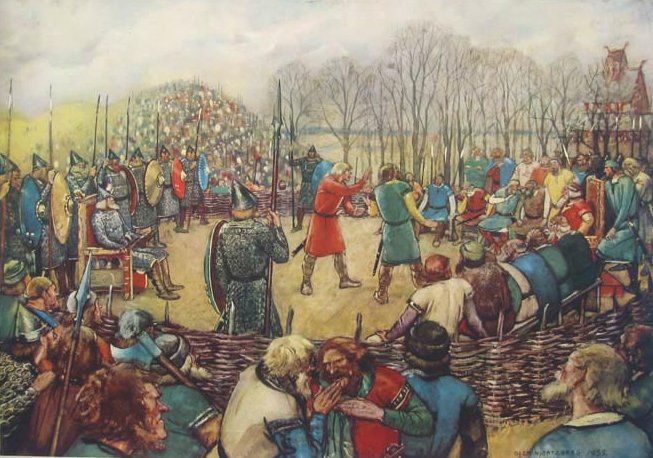Viking Law And Order Was Based On The Thing System
A. Sutherland - AncientPages.com - It's an ancient fact that Vikings were fierce warriors, and they did plunder a lot. However, what could be more well-known is that even though there was no written law and only rune writing existed at the time; the ancient Viking society had a sophisticated government and law system.
A Germanic Assembly, by Charles Rochussen. Source - Public Domain
In the pre-Christian clan-culture of Scandinavia, the members of a clan were obliged to avenge injuries against their dead and mutilated relatives. As the result, those involved were frequently involved in a prolonged and unpleasant dispute or quarrel. This kind of action was necessary for solving a problem.
Viking law and order was based on the so-called thing system. People believed it was better than having disputes settled by duel or family feuds that could lead to unnecessary injuries. In the Viking society, all free men, women and disabled people were allowed to attend its meetings.had the right to conduct revenge killings. You could kill somebody in public without suffering severe consequences because you were honest, did not hide your actions, and allowed others to react.
It was essential to take responsibility for the murder, not run away, and pay the fines. The same applied to killing somebody in a fight.
Traditionally, feuding was often seen as the most common form of conflict resolution used in Viking society. Tribal feuds often contributed with reducing and avoiding social disorder in North-Germanic cultures. Additionally, they played an significant role as forums for power display, marriage alliances, honor isues, and inheritance settlements.
Administrative organization in Sweden's thing sites (similar to those in Norway) began to change in the late tenth and eleventh century. It was time of the power struggle caused byt the rising Christian royal power in the process of establishing itself and the old, local magnate families still attempting to maintain power.
A place for an assembly - a thingstead. Illustration by Hjortzberg, O. 1932 - Norstedt und Söner/Westermann/Esselte/Stockmann, P., Stockholm - Public Domain
Runic inscriptions at thing sites are considered the most valuable source of our knowledge about the battle for power between the king and local magnates that took place. Important power statements were recorded in stone.
Swedish assembly sites had a number of specific features that usually included large natural or oftan man-made mounds, often burial mounds, rune-stones, and communication routes - crossings between roads by land (or water) to allow greater gatherings.
Mainly in Scandinavia, large runestones decorated with inscriptions informed about a local family's attempt to claim supremacy are common features of thing sites.
The Thing Took Place At Regular Intervals
The governing assembly legislated, elected chieftains and kings, and judged. It was made according to the law, which was memorized and recited by the "lawspeaker" (the judge). The thing's negotiations were presided over by the lawspeaker and the chieftain or the king.
While the things were not democratic assemblies in the modern sense of an elected body, they were built around ideas of neutrality and representation, effectively representing the interests of largernumbers of people. In Norway, the thing was a space where freemen and elected officials met and discussed matters of collective interest, such as taxation.
Some scholars say that the things were dominated by the most influential members of the community, the prominent heads of clans and representatives of wealthy families, other scholars describe how every free man could put forward his case and share his opinions.
These things also served as courts of law, and if one of the smaller things could not reach agreement, the matter at hand would be brought to one of the bigger things, which included larger areas
Towards the end of the Viking age, royal power became centralized and the kings began to strengthen power and control over the assemblies. As a result, things lost most of their political role and began function as courts in the later Middle Ages.
 Germanic thing, drawn after the depiction in a relief of the Column of Marcus Aurelius (193 CE). Image upploader: Wolpertinger - PublicDomain
Germanic thing, drawn after the depiction in a relief of the Column of Marcus Aurelius (193 CE). Image upploader: Wolpertinger - PublicDomain
In late medieval times, the Thing was made up of twelve representatives for the farmers, free-holders or tenants.
A Thing was the governing assembly made up of the free people of the community. Each community had its own independent Thing where all free Vikings could gather to make law, resolve disputes and make decisions. The meeting place was called a thingstead.
The Thing had meetings that could sometimes last several days. Each Thing had a law speaker who would recite the law from memory. Although all free men of the community were entitled to voice their opinion, it was still up to the law speaker and the local chieftain to judge and settle the cases of dispute they heard.
To be summoned to the Thing was regarded as a very hostile act; therefore, the parties always tried to reach an agreement.
Those who faced a trial at the Thing knew the verdict could devastate their lives. People found guilty were either fined, declared semi-outlaw, or entirely outlawed. To be an outlaw was a dreadful punishment for a Viking, as it resulted in being banished from society and having one's property confiscated.
A person declared an outlaw by the Thing could never expect to receive help from anyone. Isolated from society, outlaws faced loneliness and could be killed at any time by anyone. The only way to survive with dignity was to escape abroad or settle in a different location where they were not known.
According to the rules and regulations of the Thing, all free men, including the kings and chieftains, must respect the law. The Thing was considered a democratic system, and everyone except enslaved people and exiles was considered a citizen.
Written by – A. Sutherland - AncientPages.com Senior Staff Writer
Updated on May 13, 2024
Copyright © AncientPages.com All rights reserved. This material may not be published, broadcast, rewritten or redistributed in whole or part without the express written permission of AncientPages.com
Expand for referencesMore From Ancient Pages
-
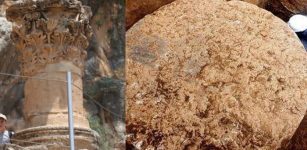 Massive Roman-Era Column Base Of Limestone Unearthed In The Foothills Of Mount Hermon, Golan Heights
Archaeology | Oct 29, 2022
Massive Roman-Era Column Base Of Limestone Unearthed In The Foothills Of Mount Hermon, Golan Heights
Archaeology | Oct 29, 2022 -
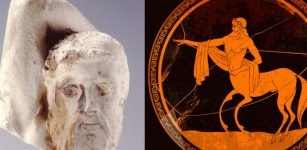 Why Is This Centaur Head A Scientific Mystery?
Archaeology | Jan 19, 2024
Why Is This Centaur Head A Scientific Mystery?
Archaeology | Jan 19, 2024 -
 ChatGPT Is Confronting, But Humans Have Always Adapted To New Technology – Ask The Mesopotamians, Who Invented Writing
Featured Stories | Feb 13, 2023
ChatGPT Is Confronting, But Humans Have Always Adapted To New Technology – Ask The Mesopotamians, Who Invented Writing
Featured Stories | Feb 13, 2023 -
 Egypt Recovers Ancient Wooden Coffin From Houston Museum In The US
Archaeology | Oct 4, 2022
Egypt Recovers Ancient Wooden Coffin From Houston Museum In The US
Archaeology | Oct 4, 2022 -
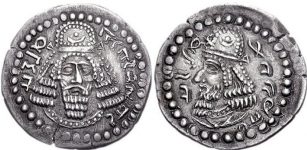 The Rise And Fall Of The Sasanian Empire
Civilizations | Jun 19, 2019
The Rise And Fall Of The Sasanian Empire
Civilizations | Jun 19, 2019 -
 Can Baboons Solve The Ancient Mystery Of Punt?
Archaeology | Oct 25, 2023
Can Baboons Solve The Ancient Mystery Of Punt?
Archaeology | Oct 25, 2023 -
 Migrants From Turkey And Greece Arrived In Britain Some 6,000 Years Ago
Archaeology | Apr 16, 2019
Migrants From Turkey And Greece Arrived In Britain Some 6,000 Years Ago
Archaeology | Apr 16, 2019 -
 Tetzacualco – Mesoamerican Mini Model Of The Universe Discovered Underwater
Archaeology | Jan 4, 2018
Tetzacualco – Mesoamerican Mini Model Of The Universe Discovered Underwater
Archaeology | Jan 4, 2018 -
 Unexplained Teleportation Cases Of People – Dangerous Fog – Part 2
Ancient Mysteries | Oct 2, 2019
Unexplained Teleportation Cases Of People – Dangerous Fog – Part 2
Ancient Mysteries | Oct 2, 2019 -
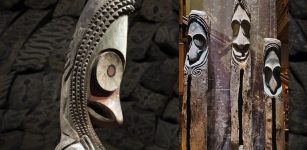 Curious Alien-Looking Slit Gongs Figures From Vanuatu Allowed Villagers To Communicate
Ancient Traditions And Customs | Sep 24, 2018
Curious Alien-Looking Slit Gongs Figures From Vanuatu Allowed Villagers To Communicate
Ancient Traditions And Customs | Sep 24, 2018 -
 On This Day In History: Hubble Space Telescope Was Launched – On April 24, 1990
News | Apr 24, 2016
On This Day In History: Hubble Space Telescope Was Launched – On April 24, 1990
News | Apr 24, 2016 -
 Surprising Evidence Of 12,000-Year-Old Unknown Advanced Secret Knowledge Held By Elite Individuals – The Connection – Part 2
Ancient Mysteries | Feb 7, 2021
Surprising Evidence Of 12,000-Year-Old Unknown Advanced Secret Knowledge Held By Elite Individuals – The Connection – Part 2
Ancient Mysteries | Feb 7, 2021 -
 Monte d’Accoddi – Mesopotamian Ziggurat In Europe Built By King Of Uruk?
Featured Stories | Feb 5, 2018
Monte d’Accoddi – Mesopotamian Ziggurat In Europe Built By King Of Uruk?
Featured Stories | Feb 5, 2018 -
 Ancient City Filled With Treasures May Be Hidden Underground In South America
Ancient Mysteries | Jul 20, 2018
Ancient City Filled With Treasures May Be Hidden Underground In South America
Ancient Mysteries | Jul 20, 2018 -
 Hairy Snail Discovered In 99-Million-Year-Old Amber
Archaeology | Oct 29, 2022
Hairy Snail Discovered In 99-Million-Year-Old Amber
Archaeology | Oct 29, 2022 -
 Red-Headed Alevi In Kurdistan Could Be Guardians Of Watchers’ Secret Knowledge And Shed Light On The Excalibur Legend
Ancient Mysteries | Jan 31, 2018
Red-Headed Alevi In Kurdistan Could Be Guardians Of Watchers’ Secret Knowledge And Shed Light On The Excalibur Legend
Ancient Mysteries | Jan 31, 2018 -
 Surprising Mask Of A Human Face Found On Cistern Wall In The Ancient City Of Ptolemais
Archaeology | Jan 17, 2025
Surprising Mask Of A Human Face Found On Cistern Wall In The Ancient City Of Ptolemais
Archaeology | Jan 17, 2025 -
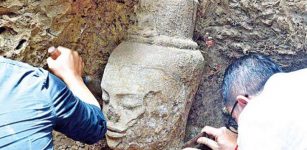 Sandstone Head Of A Bodhisattva Discovered Near Ta Nei Temple
Archaeology | Oct 15, 2019
Sandstone Head Of A Bodhisattva Discovered Near Ta Nei Temple
Archaeology | Oct 15, 2019 -
 4,500-Year-Old Ramp Might Explain How Huge Stones Were Transported To Great Pyramids’ Building Site
Archaeology | Nov 9, 2018
4,500-Year-Old Ramp Might Explain How Huge Stones Were Transported To Great Pyramids’ Building Site
Archaeology | Nov 9, 2018 -
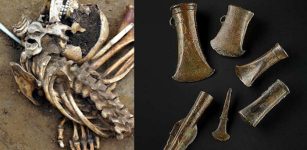 DNA Study Sheds New Light On Ancient Britain’s Language, Ancestry, Kinship, Milk
Archaeology | Dec 26, 2021
DNA Study Sheds New Light On Ancient Britain’s Language, Ancestry, Kinship, Milk
Archaeology | Dec 26, 2021


